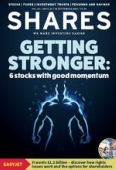Archived article
Please note that tax, investment, pension and ISA rules can change and the information and any views contained in this article may now be inaccurate.
2021: boom year for investments

Equity funds have taken in more money in 2021 ($1 trillion) than in the previous 20 years combined ($0.8 trillion), according to Bank of America.
For many individuals who first invested after the global financial crisis of 2008/2009, stock markets may have seemed an easy place to make money. Indeed, we saw a decade of fantastic returns until reality hit home with the Covid-19 crisis.
Two punishing months in early 2020 reminded us of the risks of investing as global markets plummeted. However, the timing and pace of the subsequent market recovery took everyone by surprise and 18 months on, the Covid market crash is starting to look just like a blip on a long-term share price chart.
There are some signs that markets are looking toppy – as demonstrated by investor behaviour such as the Reddit WallStreetBets social media phenomenon which saw a surge in people buying shares for the first time, and the ongoing rush of stock market flotations.
Inflation risks remain elevated and together with higher taxes would suggest corporate profits could come under pressure. And let’s not forget there are growing concerns about the pace of global economic growth.
Yet the fact US markets continue to hit record highs would suggest investor sentiment remains bullish.
Fund managers on the receiving end of the strong cash inflows into equity funds must deploy that money in the markets as fast as they can. In doing so, they are driving markets even higher.
It’s not just fund managers buying stocks. In markets such as the US, exchange-traded funds remain incredibly popular, and they account for a large chunk of this year’s big inflows into equity funds. These are tracker funds which mirror the performance of a specific basket of stocks, known as an index.
Jefferies says in the seven days ending 8 September, global equity ETFs saw their 37th consecutive week of inflows. Year-to-date they’ve seen $601 billion of inflows, two thirds of which has gone into North American stocks.
In recent weeks, US large and small cap funds have been very popular with investors. On a sector basis across the geographies, real estate, technology, energy and healthcare have seen notable inflows, while outflows have been seen in areas such as financials and materials.
The ESG (environmental, social and governance) theme also continues to catch investors’ attention and their wallets.
While it is fantastic that so many people are investing their hard-earned money, it is important to remember that stock markets are not a one-way ticket to wealth creation.
At some point we’re going to see a pullback and at that point it is vital not to panic. No-one knows exactly when that will happen, but the major US stock indices such as the S&P 500 could lead global equities lower, so it is worth watching the American market closely.
‘The bottom line is that the most likely pullback for the S&P 500 will come from either some form of a margin shock, a sea-change in inflation/deflation expectations and rising treasury yields at a time of stalling earnings momentum,’ say analysts at Jefferies.
If markets do lose strength, just remember that by investing on a monthly basis your money would buy more fund units in a weaker market which could benefit you in the longer term assuming markets recover.
Important information:
These articles are provided by Shares magazine which is published by AJ Bell Media, a part of AJ Bell. Shares is not written by AJ Bell.
Shares is provided for your general information and use and is not a personal recommendation to invest. It is not intended to be relied upon by you in making or not making any investment decisions. The investments referred to in these articles will not be suitable for all investors. If in doubt please seek appropriate independent financial advice.
Investors acting on the information in these articles do so at their own risk and AJ Bell Media and its staff do not accept liability for losses suffered by investors as a result of their investment decisions.

 magazine
magazine








